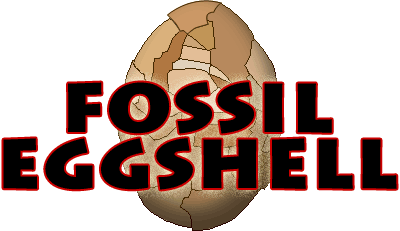
This week, we’ve launched a new online special exhibit — Fossil eggshell: Fragments from the past. This is the best online source of information about fossil eggshell — you can’t find this info anywhere else! This special exhibit was created in collaboration with Laura E. Wilson, Karen Chin and Emily S. Bray, from the University of Colorado, Boulder, and Frankie D. Jackson from Montana State University.
We can learn a lot from fossil eggshell. Using scanning electron microscopy, we can examine the details of the shell morphology and structure. This provides clues as to the identity of the egg-layer; different groups of animals have very different types of shells. Fossil eggshell can also tell us about the ecology and behavior of the egg-layers — and their babies.
This online special exhibit features a case study of the Willow Creek Anticline in the Two Medicine Formation, Montana, where paleontologist Jack Horner and colleagues found numerous dinosaur eggs and eggshell fragments. Read about the discovery of the fossils, and what Jack and his colleagues learned about the egg-layers — dinosaurs Maisasaura and Troodon — through their detailed analyses of the fossil eggshell.
Much of the material in the online exhibit comes from the Hirsch Eggshell Collection at the University of Colorado Museum of Natural History. The collection was donated by eggshell enthusiast Karl Hirsch who made significant contributions to the field of fossil eggshell research. Learn about his legacy in the special exhibit section Karl Hirsch and the Hirsch Eggshell Collection.